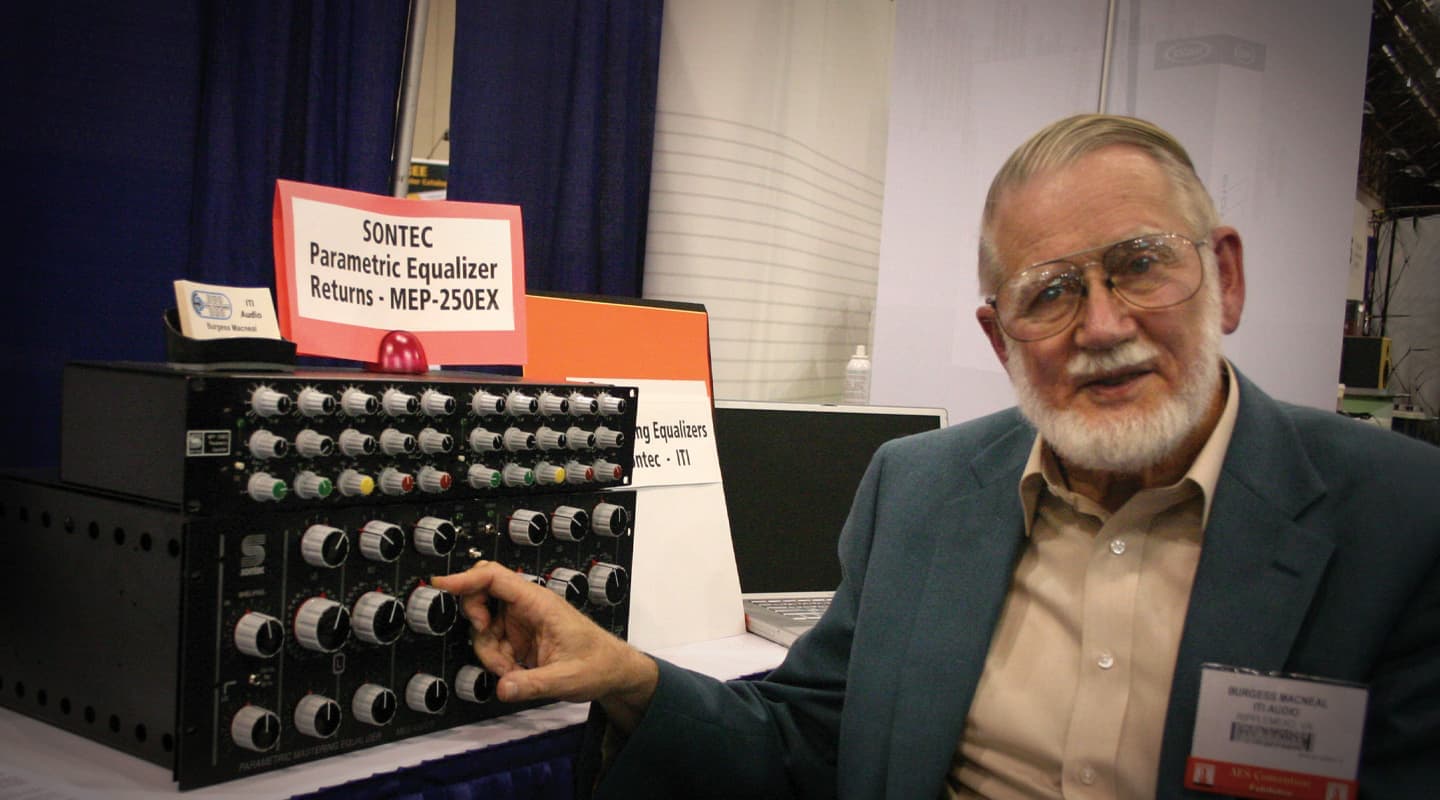
Name Behind the Name: Burgess Macneal
Sightings of Burgess ‘Mr Sontec’ Macneal are rare, and interviews even rarer. So lovers of fine audio design settle back, pour yourself a glass of something short and smooth… and enjoy.
Sprinkled in between the big names of the audio industry at last year’s AES trade conference were countless boutique manufacturers offering everything from ‘better than original’ U47 replicas to 500-series rack module EQs. There were even re-issues of esoteric ’70s keyboards replete with their associated snarls of patch cords… all who saw were amazed! There was also a Mellotron on show, but no-one responsible for it wanted to tell you who made the tapes… oh no, that was far too big a secret to divulge… national security would have been compromised.
Amongst this fever pitch of ‘re-issued classics’ was an impressive white EQ ‘replicating’ the now almost legendary, nay mythical, Sontec equaliser. Now the Sontec was the stereo EQ that started our whole love affair with fully-parametric equalisation back in the early ’70s, and replicating it seemed mildly scandalous, I thought. Having said that, if it was any good I could imagine it might prove quite popular provided it didn’t cost anything like the sums of money that currently change hands when a Sontec comes up for sale. But surely a faithful reissue would be impossible to make, regardless. The construction of an original Sontec EQ is a marvellous thing; dialling in an EQ setting on one of these babies is like cracking a safe. After nuclear war the three things left standing will surely be my old Studer, the Sontec EQ and Uluru. Anyone who owns an original (and there are a small handful of lucky individuals in Australia who do) swears by them. They’re like the EQ equivalent of a Neve BCM10 – at parties, to say you own a Sontec is to immediately draw a crowd… or clear the room, I’m not sure which.
On the so-called ‘Sontec’ stand was an old gentleman who appeared to know a thing or two about it, and as I wandered past he was busily showing some eager customers the various control knobs and switches. They seemed impressed. But I kept walking; I’d seen enough replicas for one day and my feet were killing me. So I wandered around the corner and sat down on Joe Malone’s stand for a breather. No sooner had I alighted on his couch than Joe was at me: “You’ve just gotta go over to the ITI stand and meet Burgess Macneal, He’s a total legend.”
“Who?” I responded.
“Burgess Macneal… Mr Sontec!” said Joe, looking both excited and stunned that I didn’t know the name.
“Really, I just assumed the EQ I just saw was a re-issued copy.”
“No, no, this is the real deal!”
So, with renewed enthusiasm, I went back over to Burgess’s stand, introduced myself and asked him if he might like to have a chat about the history of Sontec, and the bona fides of the ‘replica’ now turned ‘new original’ sitting in front of me.
“Why sure, but why would you want to interview an old man like me?” he said with a wry grin.
So began our three-hour conversation. What started out in a busy New York trade hall, ended with Burgess, his wife and I carrying out some Sontec EQs in the half light of a closed down venue to avoid the massive costs of getting the Teamsters Union representatives to move the gear from the stand to the doorway. I started by asking him how he came to be a ‘pro-audio lifer’ and after that, barely spoke again…
FROM RAGS TO SWITCHES
Burgess Macneal: I first became interested in recording as a child, when I recorded myself playing piano (very badly) with a friend’s wire recorder. It was one of those recorders where splicing involved knotting the wires together. The piano was truly awful and the recorder wasn’t much better, so the recordings were just miserably thin sounding. From there I got into hi-fi and eventually bought a nice mono recorder called a Berlant, which was nowhere near as expensive as an Ampex, but a good tape recorder nonetheless. I’d made enough money in the printing business when I was young that I could pay my school bills and have money left over. I was 17 or 18.
As a youngster, I went to what was then called an ‘engineering’ high school in Baltimore. There you were taught how to operate steam boilers, you learnt the stress testing of metal, you learnt hydraulics, you even learnt how to design bridges. By the time you got through, you’d learnt calculus and all kinds of stuff. But I never actually graduated from the course due to illness, and I never wanted to go into engineering anyway because my grades were so lousy.
Soon after engineering school, I fell in with a fella who had a stereo recorder and two very good condenser microphones. He, in turn, had a friend who was the assistant manager of the Baltimore Symphony, and at that time the orchestra needed to make a recording of themselves to enter a contest. So we said, ‘well, we’ll do it!’ – not knowing a thing about recording at that stage. So we went and made the recording, and incredibly, the thing came in first place for ‘sound quality and engineering’ – which didn’t make the symphony very happy – but we thought we were hot stuff. So we figured, ‘why don’t we open a studio?’ So we did. We moved into an FM broadcasting studio with nothing more than a couple of Ampex machines, my Berlant and some microphones.
A couple of years before this I’d started to do some design work with tubes. I built some power amps that actually worked – they weighed a ton but they worked. And I’d read about these things called pan pots, so I built a tube mixer with pan pots – you couldn’t buy anything that had those back then. So all this stuff gradually came together in the studio: we used my home-made tube mixer and the two-track equipment of course – that’s all there was at that time.
Andy Stewart: What year was this Burgess?
BM: We opened the studio in 1958 or ’59. It was a primitive time, with the advent of stereo LPs only just beginning, and in varying degrees of quality. There were a bunch of audio nuts at the station and we did some recordings there. Some of them were good and some of them weren’t. The studio wasn’t that good in all honesty. It was small, but it was something to do. Then we got requests from the Baltimore Symphony: ‘could we do broadcasts?’. So we bought the first stereo microphone that Neumann imported into the US. It was called an SM2, serial number 102, and we hung it from the ceiling.
SAME AS IT EVER WAS
Talking to Burgess revealed just how little things have changed in the audio industry over the decades. Despite the technical revolutions that have flowed through in the last 50 years, the ‘studio enthusiast’ has always worked extremely hard to make ends meet. The common thread has always been a passion for sound, and long working hours. It’s consistently been a world where discussions about business models and profit margins seem to drift into the background like reverb…
BM: We were so busy trying to find customers and get the new recording studio going that we didn’t watch out for our business very well. Then one day we discovered that if we were in business six more months we’d be out of business because we were losing money. We had a quick meeting, and decided, ‘well, we could make pressings of the recordings we were doing’. We weren’t too bright you see; we didn’t know this would be very difficult! So, without knowing just how difficult, we borrowed money from a bank and bought what was probably the only mono fusion press ever made by Mr Gerry Mentor – one of the founding members of the AES. It was an intriguing process, where you took a round disc of plastic, and a back sheet of microscopic granules of pure vinyl; put them into this mould with the two labels; and closed the thing in what was called the ‘hot press’. When you took it out again you had a record. They were very good machines, because the vinyl was really hard, so the high-end was really great compared to commercial records where the plastic was softer in order to mould it faster. But we soon outstripped the capacity of that machine and decided to buy ‘real’ presses.
Unfortunately, steam presses drive you up the wall, so we moved the pressing plant to downtown Baltimore four blocks from ‘District Steam’, which supplied high-pressure steam services to a lot of the buildings. We found a location in the basement of a large building, set up two presses there and ran ourselves a pressing plant business! But before that we had to start cutting. We had probably the second Neumann lathe in the US – a manual lathe, not an automated one. There we did cutting, we sent the plating out, we sent out the manufacturing of the labels, and we made records, and we made money… all of which supported the studio until it could eventually stand on its own two feet.
We mostly survived by doing commercials. I was working two jobs: in the day time I’d be at the pressing plant, and at night, when my partner had gone home, I’d do music sessions. In the process I accidentally wound up doing a song that sold big time. After that, producers started calling us saying, ‘can we come down and record with you?’. When they’d turn up, however, they’d see the studio, and go, ‘you recorded that hit song here?’. And we’d say, ‘yes sir!’.
FOUR YEARS LATER
After four years working two jobs and hellish hours, Burgess met up with a young man who would go on to change one particular aspect of the recorded music industry forever. Coincidentally, they’d both been to the same school but had never crossed paths due to their age difference…
BM: I was in the studio one day and in the door walks Dean Jensen (Jensen Transformers) and in tow was little George Massenburg – who at that time was about 15 or 16. Dean and George lived two houses apart and knew each other well. When George came in, it didn’t take me long to realise he was a very smart young man who seemed very interested in recording. We got along real well and the two of them helped me with a console I was building at the time. We didn’t know what we were doing, and built this thing using new untried ICs that were available at the time – an interesting process, shall we say. The console eventually worked alright, but there was a lot of yelling and screaming. We learned a lot of things to never ever do again.
AS: What were these things?
BM: Never use untried ICs for starters. And never put a console in an operating room and build it there. Build it someplace else and move it in. We didn’t have anywhere else to build it and we (optimistically) thought we could finish it off while my business partner was away… big mistake.
Meanwhile, the pressing plant had grown, with four machines up and running – business was good. But there were serious philosophical differences between my partner and I, and eventually we sold the business to a company called ITI, who were getting into audio/video production at the time. ITI was, at that time, in the process of designing and gearing up to build a small colour movie camera and they had this enormous building, so we moved the pressing plant and recording studio in there. The only thing we lacked for all the new studios was consoles. So the president of the company said ‘let’s go to New York, and look at consoles at the AES show’, so we did.
THE BIG EYE OPENER
But when we got to New York – in 1968 I think – and the president saw the prices, he was shocked: ‘hey these things are expensive! We have an engineering department, why don’t we build our own?’. George looked at me and smiled, I looked at George and smiled.
What George and I wound up doing was designing a console that was way ahead of its time. Unfortunately, there’s only two of them, because it was all logic controlled, believe it or not. You could press an input button and assign it to any number of outputs, you could press an output button and assign any number of inputs to it. You could even ‘query’ it. By which I mean, you could press an output button and see what inputs were connected; you could press an input and see what outputs it was connected to, including the reverb channels and the auxiliary monitors.
I designed the architecture while George worked on mic preamps and all the rest. But we still had an equaliser that didn’t work and we tried everything to fix it. We also had a fella who was an engineering student at Princeton University, and the three of us tried and tried to resolve the equaliser problem… we could have written a book entitled; ‘300 ways not to build an equaliser’. We finally got close, but it still didn’t do what we wanted it to. A Pultec’s not bad, we thought, but it doesn’t do this and didn’t do that. So we kept at it.
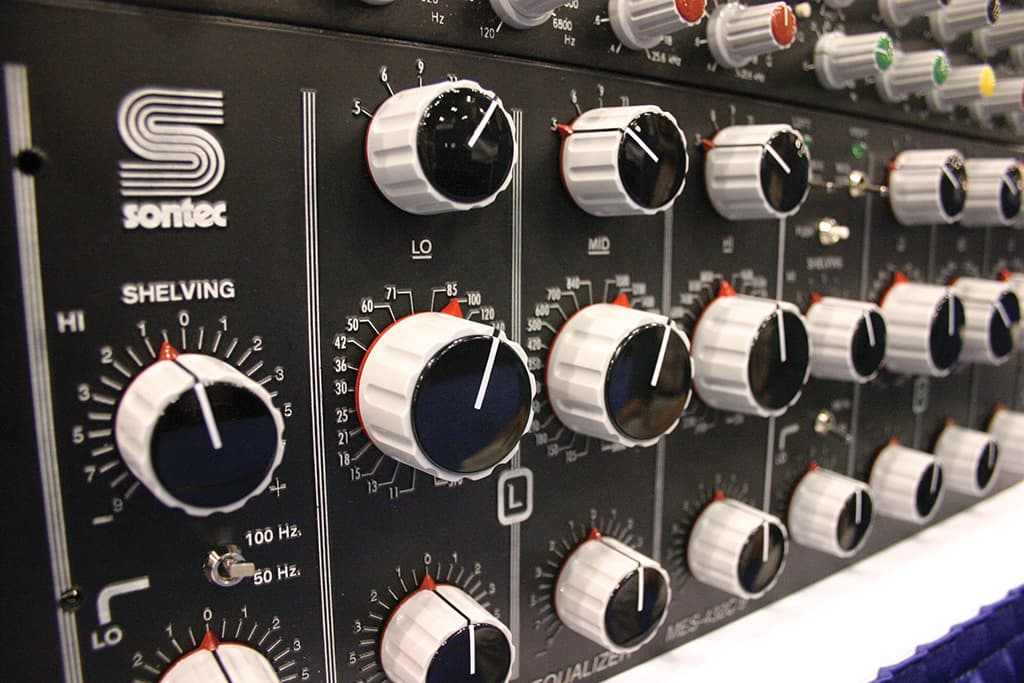
BREAKING THROUGH
BM (continues): Eventually we broke through the barrier. George was doing recording sessions at the time – at night in the makeshift studio using the equipment we’d salvaged from the other building. Then one night, he came into the lab after a session and worked on it some more, and finally found the ‘magic bullet’ that made it work. The next morning, when I arrived at eight o’clock, driven into my office door was a knife holding a white piece of cardboard that said, ‘This is it, this works!’.
It was crude, it was noisy, it had distortion, but it worked. Obviously there have been a lot of refinements to EQs since then, but that breakthrough forged the way ahead. At the same time we’d also been trying to design input and output stages for the amplifiers – we got an output stage to work but we hated the input stages. Finally the chief engineer at ITI said, ‘hey, I’ve designed amplifiers before’, so he designed an input stage which we glued to our output stage, and that amplifier (with two variations) are used in the ITI equaliser. It has no slew rate, it’s got a bit of second harmonic distortion, but its really warm and really punchy.
FROM DESIGN TO MARKET
AS: Did you ever intend to sell the equaliser back then?
BM: Well, interestingly, George looked at me and said, ‘do you think we could sell this EQ?’. And I said, ‘I’ve been ready to ask you the same question… I think it’s saleable’. So we talked the boss into getting the engineering people to put it into a package – very much like the Sontec front panel people recognise today. Following on from that, George and I attended the AES show (in New York in 1971). And to our knowledge no-one was doing the live demos on the floor at that time, so we brought an Ampex machine and two sets of headphones. This was a big mistake, because within the first three hours we had people queueing down the aisle. The next day, we had people down the aisle and around the corner, because people were ringing and telling their friends to come and hear the new equaliser! We took so many orders for this thing, I couldn’t tell you. We got back to Baltimore at the end of the show and reported in that we should start making these things in quantity immediately. The ITI engineering manager and chief shareholders had a meeting and decided they were going to make 10 a month and keep them scarce.
MAKING THE SONTEC
BM: They were a bit labour intensive, but conveniently ITI had all these manufacturing people sitting around with nothing to do, because their colour camera was still on the drawing board. ITI then hired a professional salesman to help sell the equaliser and pretty soon the orders came in. They were still only going to make 10 a month, but at least they were selling all of them, which paid the bills.
AS: What was the model number of this EQ called?
BM: The original unit was called the ME – the Mastering Equaliser 230 – and it sold for $1460 in 1971. This equaliser lasted not quite 10 months. Being video guys, ITI didn’t believe that absolute clarity of audio was important (unlike us!), and worse still, the unit inverted polarity from input to output – you can probably imagine what kind of a commotion this caused among the buyers! We had to recall just about every equaliser and put a little extra block of two amplifiers near the power supply to invert the signal and get it back out in phase.
AS: To invert the inverted signal?
BM: Exactly. Which was a real fiasco, and didn’t help the reputation. On the other hand, people were forgiving, because it was a new model. The other problem was the unit wasn’t very robust. If you wiggled the front panel controls, the boards inside came loose, because they plugged into the front panel from the back. This was not a good idea. So it wasn’t long before the MEP 230 came out. The ‘P’ was added to mean ‘pots’. That was around about the time we started work on a mastering equaliser, and that was an MES, which stood for ‘Mastering Equaliser: Switches’.
We then made a mastering equaliser for our own mastering room – the cutting room – it was the only one in the world. George and I sketched it out on a piece of paper, picked the frequencies, gave it to the engineering guys and they made it. The same frequencies are being used today, but what people don’t realise is that we didn’t research the frequencies at all, we simply said, ‘hey, let’s divide it up in half octaves here, and third octaves there’. We did it with a slide rule and that was how the MES got its frequencies, and how the original equaliser came into existence. It looked exactly like the one here with me now, except that it had a Gotham Audio logo on it.
AS: Gotham?
BM: ITI figured I was too busy managing the whole audio division, so they had someone else sell them. I was okay with that; Gotham were good people, although the president of the company told us that maybe he might sell five of the mastering equalisers – maybe a maximum of 10 – because in his words, ‘there was no need for it’. He only sold one! We’ve since sold over 400.
Then, still in the early ’70s, a strange thing happened, and ironically it was the incident that drove the spike into the ITI coffin. We were at an AES show in Los Angeles when a gentleman from Paris came up to the stand, pointed to the backdrop of pictures of the ITI console and said, ‘is that the ITI console?’
‘It sure is,’ I said proudly.
‘Could you make me one?’
‘Make you one? I certainly could,’ I blurted. Thankfully I knew exactly what it cost, so when he asked ‘how much?’ I said ‘75k’. The next morning he appears with a cheque drawn from a Paris bank for $10,000. Soon after this incident another gentleman arrived and said, ‘I understand that so and so just bought a console from you’. I said, ‘yes, he did.’
‘Well they’re our major competitor,’ he went on… ‘So I want one bigger and better. Can you make it?’
‘How much bigger and better?’ I inquired politely, and he says he wants one with more channels, and I say, ‘sure, I can do that’. I think I told him $95,000, I can’t remember, but he said, ‘I’ll bring you a deposit.’ And he did.
So needless to say we rush back to our hotel that evening and phone the Baltimore office with the great news that we just sold two ITI consoles! The president then says, ‘I’ll call the engineering guys and call you right back.’ 20 minutes later he calls back and says, ‘the engineering guys don’t want to build consoles’…
BODY BLOW
BM: Well, as far as George and I were concerned, that was pretty much the death blow. Soon after that incident George and the salesman both left the company. The salesman, at least, saw the writing on the wall – ‘if you can’t give me products to sell, why am I here?’ Eventually I left ITI as well.
By this time ITI was getting into all kinds of financial difficulties. Then one day, the bank decided to shut the place down. The company sat in the building for months and months while the bank figured out how to sell it, and finally in January of 1975 – in a driving snowstorm – they had an auction. At the auction, George Massenburg – with Earth, Wind & Fire’s backing – bought the entire big studio, a company in Nashville bought the mastering lab – if you want to call it that – and I bought the pressing plant. Moral of the story: if you save your pennies you eventually get stuck with record presses! Looking back on it, I often wonder to myself, what was I thinking!
When the auction was over, they’d sold a lot of miscellaneous stuff. They’d sold resistors, capacitors and all the hardware. ‘But what happened to the equalisers?’. I looked around, and there, under a tarpaulin on the floor, was all the engineering, drawings, front panels, and chassis – all kinds of stuff. I said to the auctioneer, ‘How much for this pile of junk?’. He said, ‘give me $75’. So I did, and consequently became the owner of ITI. That was a really exciting day. George was like, “you actually bought it?”
“I actually bought it,” I said. “… for 75 bucks!”
We could have written a book entitled; ‘Three hundred ways not to build an equaliser’..
THE $75 COMPANY
BM: We quickly found new premises for the pressing plant gear, moved the important stuff into our very, very small house, and started to make the Sontec equalisers in the front room, with my wife doing the assembly and yours truly procuring parts. We eventually re-hired many of ITI’s good people, and went back into manufacturing. I went out and started selling the mastering equaliser, which at that stage nobody had ever really used before. Sterling Sound bought the first one, which is still there in use I think. After that, people started saying, ‘they’re using it at Sterling… we need one’.
AS: So what made the Sontec EQ so popular; what gave it its character?
BM: Well, good question. Remember the Sontec was designed as a mastering EQ – for cutting vinyl. A cutting lathe needs to be able to control what’s known as the ‘preview’ channel, because it’s 6/10ths of a revolution of an LP ahead of the ‘cutting’ channel. The computer has to know exactly where everything is and how big it’s going to be, so it can space the grooves apart the right way. Neumann lathes – the automatic lathes – would do all that for you. But most people would try to have one equaliser and sort of fudge the other channel by moving the gain control up and down. The Sontec was the first equaliser that allowed you to adjust the program and the preview, particularly in the bass – which should be in phase – which made the disc a lot better and reduced their reject rate, because you no longer had to worry about overcutting. If you set up the lathe correctly, you were going to get a good disc. This made engineers very happy, clients happy… everyone was happy. And although people liked the original ITI equaliser, George Massenburg and I agreed that we preferred a faster more neutral-sounding equaliser for mastering. And so we went ahead and designed the boards – the earliest Sontec boards – via the telephone. George was in Los Angeles; I was in Baltimore.
AS: How did that work?
BM: I was the parts person: ‘Okay, you need this kind of transistor, let me see if I can find it’. We were taking the prototypes to Doug Saks’ mastering lab, to fine tune things there… which may explain why people say that this is the closest thing to a tube they’ve ever heard in solid state equipment, because it was developed listening to tube equipment.
But we had significant problems. We couldn’t get the first stages of these things to work in any way that made us happy. Then one night I was reading a book about switching transistors, and they were talking about how large the geometry inside a switching transistor was compared to a signal transistor. And I thought, well, if the geometry is bigger, the resistance is lower, and if the resistance is lower that means it has less noise. Why couldn’t we use a switching transistor? So I called George and George didn’t laugh, and he said ‘well, I can try it’. And he built a new front end using a pair of switching transistors, which had enormous surface area inside them, and it worked like a charm! What’s more, it actually sounded good: it was fast, it was stable under the right circumstances, and it didn’t catch fire… it drew a lot of current, but it sounded great. George eventually wrote me another note saying: ‘This is, and always will be, the world’s best-sounding amplifier’. I think he was right… he doesn’t think he was right.
When George came in, it didn’t take me long to realise he was a very smart young man who seemed very interested in recording.
SONTEC IN THE 21ST CENTURY
Hearing all this history pour from Burgess was like peering through a looking glass into the whole history of audio. But what of the here and now? Some 36 years later and Burgess is still exhibiting his wares at the AES (as is George Massenburg). From what little I knew, Sontec hadn’t existed as a company for decades and Burgess Macneal was almost mythical in his elusiveness – the pro audio equivalent of the Loch Ness Monster. So what does the Sontec EQ consist of nowadays… and I had to ask him where he’d been hiding all these years.
BM: Well, I’ve always been here. And as for the Mastering Equaliser, it’s the same… well no… I’m half lying. Here’s the deal: The unit was originally designed to be semi modular. When the ITI unit was first built they were using a military connector. So when we did our first Sontec, we built exactly the same board, the same size, with the same connectors in the same locations, so we could just drop it in. That way people with ITI boards, could drop in Sontec boards and get back to operating again.
These first Sontec boards are to a large extent very similar to the present ones, except for the tuning amplifiers. At that time we were using an IC, and it was the best IC available, but it was a long time ago – we made those boards up to around 1987. At that point I went into a complete redesign. Originally they were called MEP 250A, 250B, 250C and they were all – internally and structurally – very different to this. I went back and redesigned the thing to go into a discrete amplifier at the tuning stage. Which did two things: 1: it made it quieter in the EQ mode, and; 2: it gave it about 6dB more headroom in the equalisation circuits, which most people don’t notice unless they push the originals really hard. With the new amplifier I found by changing two resistors it became a lot more ‘crash’ resistant. That’s been the major change.
AS: What do you mean by ‘crash’?
BM: If you push an amplifier too hard, it clips. And unlike tubes, transistors clip hard and you’ve got all kinds of garbage coming out. So by moving the clipping level up 6dB, it became a lot harder to push the equaliser into overload when EQing. There have been minor changes in components too. The earlier modules were ‘potted’, whereas the later versions – from 1988 onwards – have little plug-in boards, no potting, and they work fine.
AS: So the switching on these new ones is all ‘original’?
BM: The switches that ITI used, and the people that made them, went out of production long ago. We subsequently found a good substitute, after a long time searching, and we used them for about eight years. But then I grew unhappy with them after reports of noise and people having to clean them started filtering in. I inquired about repairs with the supply company, only to discover that they’d been bought by somebody bigger, and they, in turn, by somebody bigger still. From there someone had decided that these were military grade and you could only buy a thousand at a time, at some ridiculous price, and we said ‘that’s enough of that’.
I eventually discovered Shallco and told them what I wanted. Initially they said they couldn’t do it, but after looking through their catalogue and saying, ‘couldn’t you take one side of this switch and one side of this other switch and put it with this body?’ they said, ‘I guess we could try it’. After a few reworks I still needed the positive feel, but without the ‘click’. They said, ‘we already make a switch like that!’. The new one works like a champ.
IN & OUT OF PRODUCTION?
AS: One thing that confuses me about all this Burgess is… has Sontec always been in production?
BM: Yes. With the Sontec we’ve been in continuous production since the spring of ’75. There was a period in the late ’70s and early ’80s when digital equalisers first appeared and business for analogue mastering equalisers disappeared. But eventually it went crazy again after the people that bought digital EQs started to revert back to analogue. The Sontec equaliser hasn’t changed much at all in that time; people’s perceptions have just swung back. You don’t want to fool around with a unit that does exactly what people expect it to do.
AS: Well especially now that they’ve become a classic. People are more concerned with what hasn’t change than what has.
BM: Well, that’s 100% true, but making them the same is now almost impossible because you can’t get parts. The transistor industry, for instance, stopped making some of the products 15 years ago. Trying to get those transistors sourced is a major headache. And we’ve even gone to the extent of having one transistor custom made for us.
Most of the Sontec equalisers I make are now 9dB models [boost and cut] and that’s a result of the Japanese wanting 6dB, and this being a compromise. So, effectively, we’re a large shop. I make everything modularly, and if you want a 9dB that does this, I take those switches, this front panel, and those boards, plug it all together in the chassis and voila!
AS: So, you’ve basically got Sontec building blocks that piece together.
BM: Exactly. Modularity has its plusses.
THE HOME OF SONTEC
AS: Do you still do all this in Baltimore?
BM: We don’t do any of this in Baltimore. My wife and I had wanted to move out of Baltimore for quite a while, so we eventually found what I call ‘Little Italy’ – a rural county in Virginia with a lot of farming, basic manufacturing… and very nice people. Pearisburg is the name of the town – a beautiful place with a population of about 2500, where half the county is national forest, filled with deer and bear and trout streams. When we first discovered it, the only trouble was it had no commercial rental property to speak of.
But then one fateful day we had a meeting with a local real estate agent at his home, where, over lunch, his wife said, ‘did you show them the old school?’. He said, ‘oh they wouldn’t be interested in that dump’. And my wife and I say, ‘Dump? Let’s look at it!’
Turns out it wasn’t a dump, but rather, 16,000 square feet of abandoned elementary school on seven acres! So we talked to the school board that owned it, and they said, ‘well, we’ll have to have a meeting’. We explained we were definitely interested in the building, and that we were keen to sign a lease. They said, ‘let’s not get excited Mr Macneal. We can’t do anything hasty, we’ve got to talk about this, think about it, and talk to some other people in the government’. At which point a fellow sitting two seats down from my wife – who’s the editor of the county newspaper (and a lawyer) – gets up, and says: ‘gentleman, I can visualise the headline in the paper next week: ‘School Board Scares Away First New Industrial Company To Move Into This County In 10 Years’.
So they called an ‘executive session’ in the bathroom, and five minutes later came out and said, ‘Okay, let’s type up a lease immediately.’ After this was done they paused and said, ‘now of course we’re going to have to charge you more than what the last tenants paid. And I said, ‘how much is that going to be?’. And they said, ‘we’re going to have to charge you $500 a month’. Well, we were paying $6000 for our manufacturing facility in Baltimore and my wife had to kick me under the table to keep me from laughing! So I said, ‘well it’s tough, but I guess we’ll have to deal with that’. They even put a clause in the lease stating that it’s continuously renewable at the same rate. I’m definitely in hick-town!
And that’s where we are today and I love it. We live in one end of the building, my wife’s piano business is up the hallway, and further up the hallway is Sontec/ITI, which takes up 40% of the building.
AS: So then… I guess the last question is, ‘how do I get myself on the list for getting one of these?’
BM: Send me an email.
AS: If I jump up and down, can I get higher on the list?
BM: I haven’t read your story yet… Never let it be said that I’m not candid, sometimes to my detriment! How desperate are you, when do you need it?
AS: I’m not in a real hurry.
BM: Good, then you’ll have to wait, but it’ll be worth it!



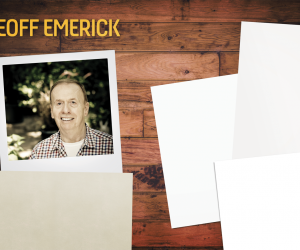
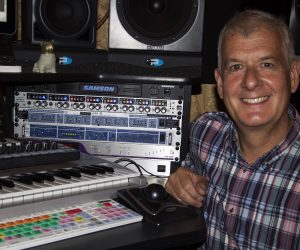
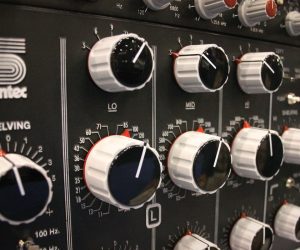
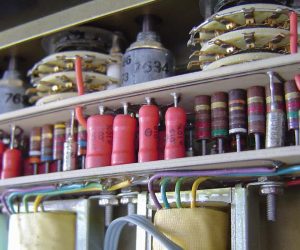


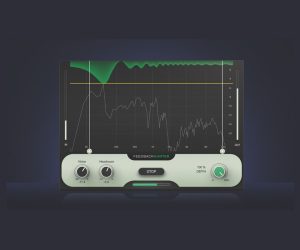
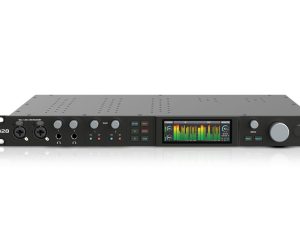

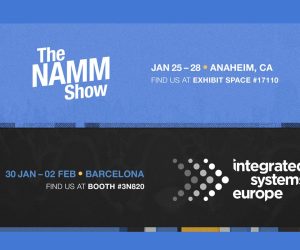
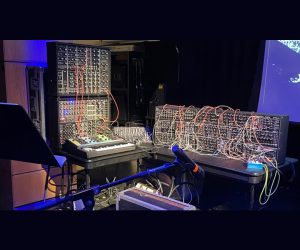


RESPONSES